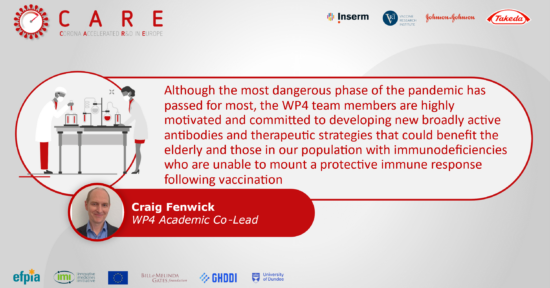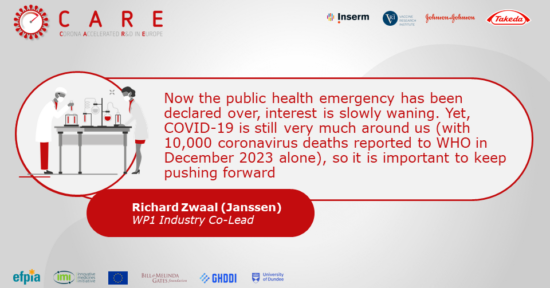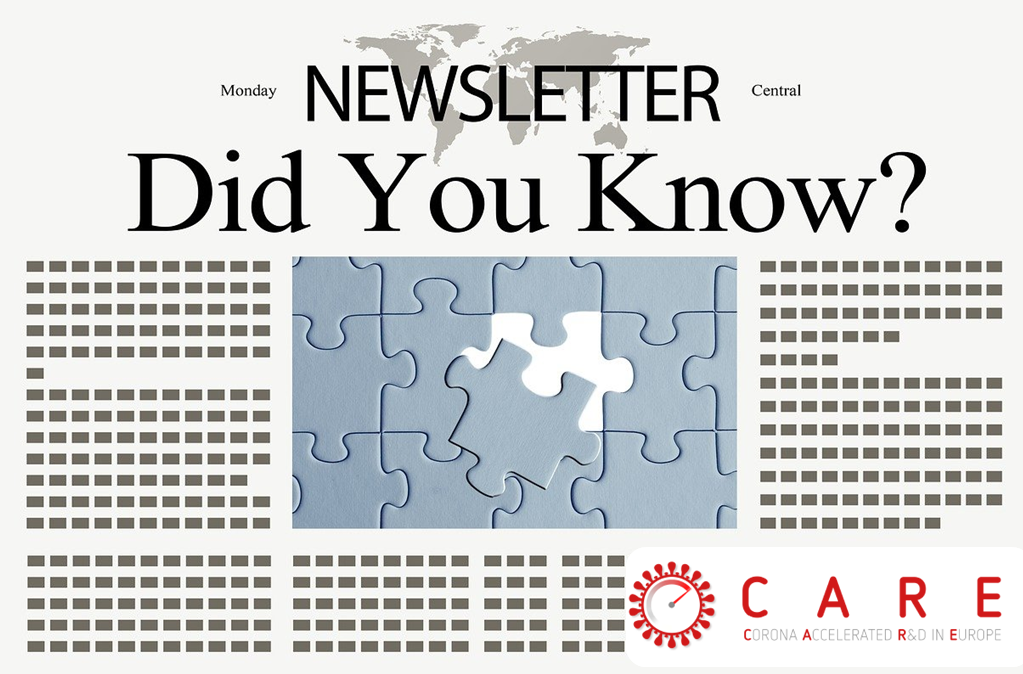Preparing for future pandemic: outputs and progress resulting from a European Commission (EC) sponsored workshop in November 2022
While Covid-19 is no longer deemed to be a pandemic, the risk of future pandemics remains. Application of lessons learned during our collective recent experience is vital to being in a stronger position to handle this situation again.
Members of the CARE consortium were among the participants of a workshop held a year ago, organized by the EC’s Directorate-General for Research and Innovation (DG-RTD) and the European Health Emergency Preparedness and Response Authority (HERA) to explore the opportunities and challenges of providing globally available broad spectrum antiviral therapeutics as a tool for pandemic preparedness.
Given the evolving and unpredictable nature of the coronavirus, the delegates of the workshop recommended inclusion of broad-spectrum antiviral therapeutics as a key tool of pandemic preparedness. The workshop which was set up with input from Dr. Ed Schmidt and Prof. Eric Snijder (LUMC), and Johan Neyts (KUL) from CARE was also attended by Marnix Van Loock (Janssen).
Why broad spectrum antiviral therapeutics?
Broad-spectrum antiviral therapeutics in cocktail or combination formats to limit drug resistance, can potentially target broader viral families or groupings in an initial outbreak, crucially buying time for more targeted therapies to be developed and tested in parallel, by containing the spread of the (novel) virus in the early stages and limiting the impact of the pandemic on the health system. The reassurance of knowing there is a swift therapeutic response to an arising future epidemic is important for society, having experienced the impact Covid-19 had on so many lives and economies globally.
Key recommendations from the workshop
To make this a reality requires measures to support rapid global drug development including effective collaborations though global and harmonized research infrastructures, adequate and flexible manufacturing capacities, fast and efficient global clinical trials, clear regulatory frameworks for broad spectrum antivirals (as current regulatory pathways only provide approval for a specific viral disease) and sufficient and flexible funding.
In this context, public-private partnerships such as CARE are an important tool to mobilize the expertise needed in an emergency response and to enable sustainable funding. Moreover, the importance of basic research to understand pathogens was highlighted as it is the foundation for the research done in response to an epidemic or a pandemic.
Since the workshop took place almost 12 months ago, a new series of calls for proposals was launched by HERA on broad-spectrum antivirals with various projects being approved in 2023. One of them is the Panviprep consortium, which will start on 1 January 2024 and in which all eight partners of the SCORE consortium (who are also all CARE partners) together with seven additional partners, will develop antiviral drugs against a range of pandemic viral threats.
How does this relate to CARE?
CARE is heavily involved in broad-spectrum antiviral development as part of its preparedness track. These recommendations lend weight to the ongoing antiviral discovery and preclinical work being undertaken today in CARE across numerous work packages.
For more information
November 2022 meeting outputs: https://op.europa.eu/s/y449



